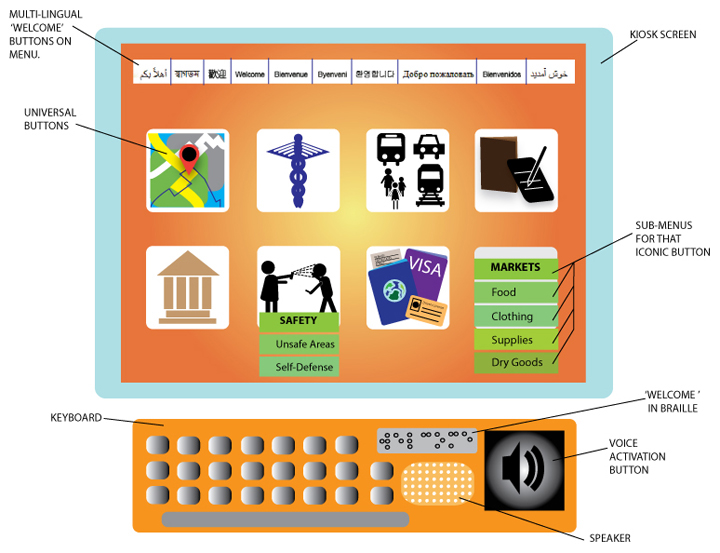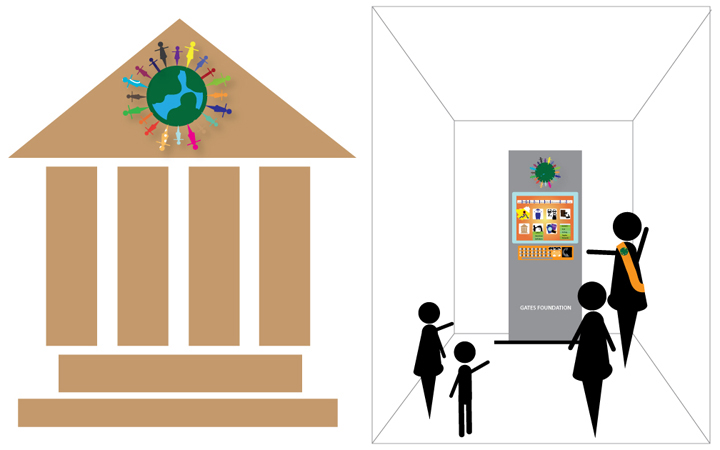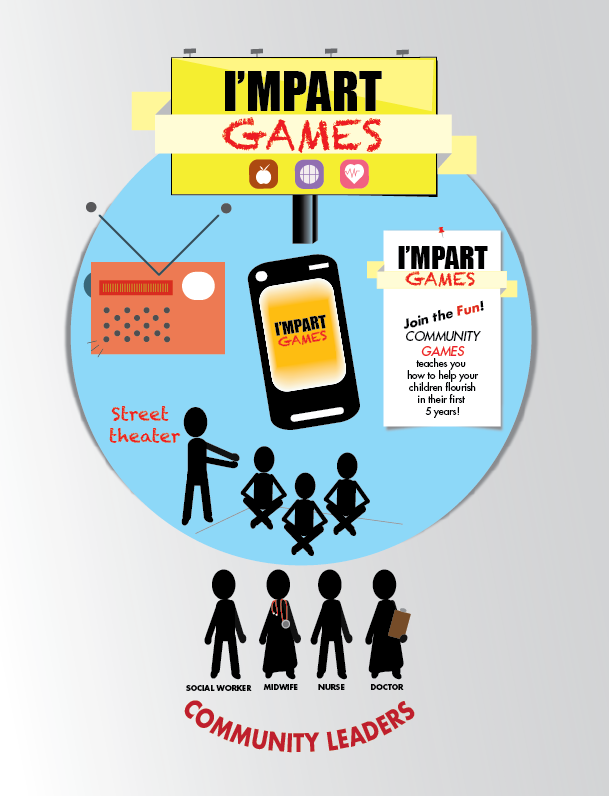As a designer and visual storyteller, I did some research and found a place to channel my ideas. A platform where I am able to connect with others to create global solutions to various challenges. My passion for human centered design allows me the opportunity to participate in global challenges for social good, designing solutions both on and off line.
I discovered OpenIDEO. This platform was created by IDEO in order to invite a collaboration between like-minded people to share ideas, insights and innovative solutions.
Prototyping is utilized as the the visual language to create an open dialogue amongst all ideators.
The following ideas are my contributions towards this effort, first as an observer then designing a solution and collaborating towards the end goal.
THE CHALLENGE: (February 2014)
How to Empower Women and Girls to Feel Safe in Low Income Urban Areas
Sponsored by - Amplify and UKaid.
I participated in this project as an individual conducting research following the challenge Amplify and UKaid presented. My solution is a multi-lingual kiosk interface design, complimented by wayfinding signage and visual identifiers at key locations.

Upon reading the challenge brief, I did some research on kioks in safe havens and came up with the idea for the interface of one that might be used for the sole purpose of this particular audience.
The menu reads "Welcome" in multiple languages. When the user clicks on their language, the experience online is in that chosen language. The buttons are standard gatherers of information equipped with drop down menus for more detailed information.
On the keyboard "Welcome" is written in braille accompanied by a speaker and voice activation button. The keyboard would be handicap accessible as it will be located lower than a standard keyboard for ease of use with assistance. From the idea to design phase, connections were made towards making the kiosk a possible reality, depending upon the organization and funding. This would be sought through an NGO (non-governmental organization).

This is a draft of what the safe haven logo might look like.

The illustration on the left, shows an example of a building identitied as a 'Safe Haven' location.
The interior illustration shows a freestanding kiosk situated in a community center. A paid community coordinator is assigned to teach women and girls how to access information from the kiosk.
THE CHALLENGE: (October 2014)
How might parents in low-income communities ensure children thrive in their first five years?
Sponsored by Amplify and UKAid.

Participating in another challenge off line this time, I attended a brainstorm session at NYU Polytechnic in Brooklyn, NY. It was a prototype location for OpenIDEO participants in the New York area. I was one of three on a team with Kevin Selhi and Rishi Bharat Jasapara.
The collaboration: We focused on aiding parents in helping them learn how to work with their children within the first five years of life through the importance of education, health and nutrition. We asked ourselves, "How might we get this information to parents quickly?"
Since many families have two mobile phones, SMS would be the fastest way to reach parents and community leaders. Information about activities and events occurring within their communities and I'mpart Games was created to be used as an effective communication tool.
"I'mpart Games will provide citizens an opportunity to win prizes (through SMS games and group games facilitated by community leaders), take in entertainment (such as street theatre, radio shows, and the games themselves), and observe media campaigns that impress upon them the importance of setting up their children to flourish and explain how to help their children."

